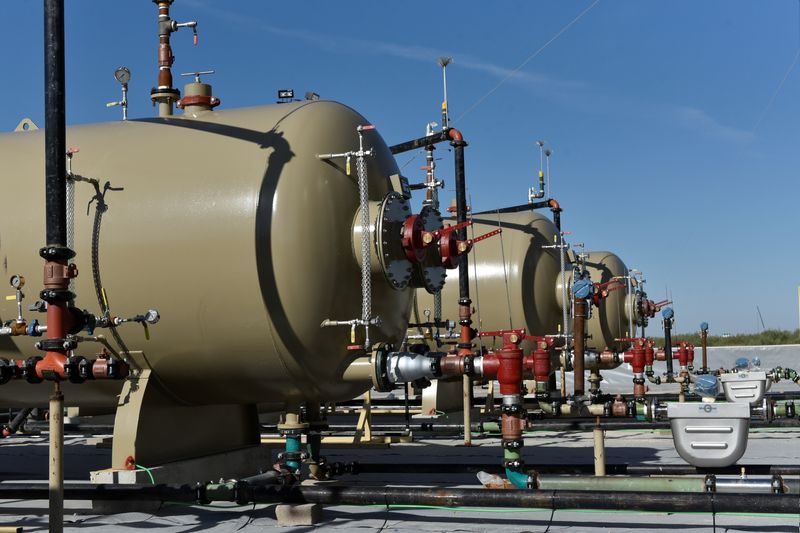Commodities
Oil prices settle lower to end week with loss as oversupply concerns persist


© Reuters
Investing.com — Oil prices settled lower Friday, wrapping up the week with a loss as concerns about oversupply persist just investors weighed up a mixed U.S. monthly jobs report that did little to influence expectations on a rate cut as soon as June.
By 14:30 ET (19.30 GMT), the futures fell 1.2% to settle at $78.01 a barrel and the contract dropped 1.1% to $82.08 a barrel. Both benchmarks fell more than 1% on the week.
Rate-cut bets unchanged after mixed U.S. jobs report
The U.S. economy added more jobs than expected last month, as rose by 275,000 in February, increasing from a downwardly revised total of 229,000 in January. But slowed and the unexpectedly rose, muddying the outlook on the health of the labor market and on the Federal Reserve rate-cut path.
The data justifes “neither a further back up in rates nor a near-term reduction,” Stifel said in a note as odds of June rate cut remained roughly unchanged at 58%, according to Investing.com’s Fed Rate Monitor Tool.
Optimism for rate cuts, which would boost economic growth and crude demand, is gaining momentum, with many now expecting the European Central Bank to cut reasonably shortly.
The ECB will likely start lowering interest rates some time between April and June, French central bank head and ECB policymaker Francois Villeroy de Galhau said on Friday.
Oversupply fears persist as international energy watchdog sees well-supplied market
The IEA’s oil markets and industry division head said, in an interview with Reuters, that the agency sees a relatively well-supplied market in 2024 with demand growth slowing, something that could put a ceiling on prices.
Data released on Thursday showed that China posted a 5.1% rise in imports in the first two months of 2024 from a year earlier to about 10.74 million barrels per day.
“However, the overall buying trend remains soft as the purchases were lower when compared to imports of 11.39MMbbls/d in December,” said analysts at ING, in a note. “China has been slowing its overseas purchases primarily due to slowing demand from refineries, weak economic indicators, and higher inventories.”
Baker Hughes rig count falls
The number of oil rigs operating in the U.S. rose by fell to 504 from 506, the first decline in four weeks, according to data Friday from energy services firm Baker Hughes, despite signs, albeit nascent, that a recovery in refinery activity is underway.
But even though drillers in the U.S. are boring fewer wells, the new oil wells coming online, which are more efficient, are expected to continue to support an uptick in domestic production beyond the current record level.
(Peter Nurse contributed to this story)
Commodities
Oil prices rise; U.S. crude inventories plunge, Russia-Ukraine truce eyed
Commodities
India’s Reliance to stop buying Venezuelan oil over US tariffs, sources say
Commodities
Oil prices climb on Venezuela supply worries

 Forex3 years ago
Forex3 years agoForex Today: the dollar is gaining strength amid gloomy sentiment at the start of the Fed’s week

 Forex3 years ago
Forex3 years agoUnbiased review of Pocket Option broker

 Forex3 years ago
Forex3 years agoDollar to pound sterling exchange rate today: Pound plummeted to its lowest since 1985

 Forex3 years ago
Forex3 years agoHow is the Australian dollar doing today?

 Cryptocurrency3 years ago
Cryptocurrency3 years agoWhat happened in the crypto market – current events today

 World3 years ago
World3 years agoWhy are modern video games an art form?

 Commodities3 years ago
Commodities3 years agoCopper continues to fall in price on expectations of lower demand in China

 Economy3 years ago
Economy3 years agoCrude oil tankers double in price due to EU anti-Russian sanctions























